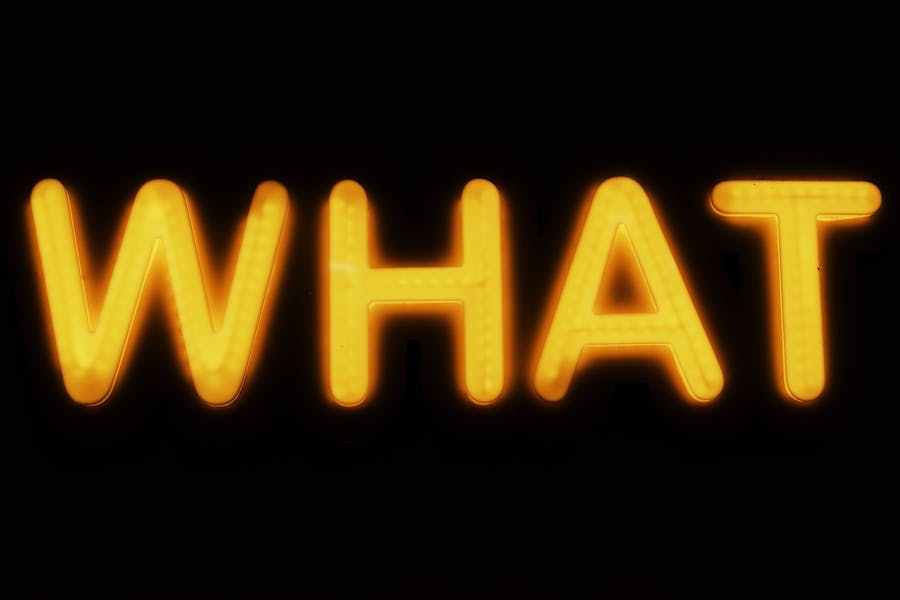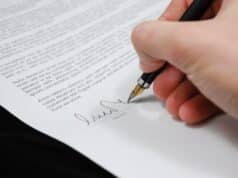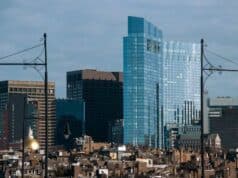
Thomas Jefferson, widely celebrated as a Founding Father and the third President of the United States is often revered for his profound influence on American political thought. Yet, beyond his public life, Jefferson harbored a deep-seated passion for innovation and invention. His intellectual pursuits spanned various fields, including agriculture, architecture, and mechanical invention, reflecting a relentless curiosity and a desire to improve practical aspects of daily life. This article delves into Jefferson’s lesser-known role as an inventor, exploring how his creative solutions and innovations shaped his era and left a lasting legacy of American ingenuity.
What did Thomas Jefferson invent?
Thomas Jefferson, the third President of the United States, was also a prolific inventor, though he never took out a patent, believing that inventions should benefit all. Among his notable inventions is the polygraph, which duplicated letters as written, facilitating his extensive correspondence. He improved the design of the portable lap desk on which he drafted the Declaration of Independence. Jefferson also designed an improved version of the moldboard plow, significantly reducing soil resistance, and made architectural innovations, including the Great Clock at Monticello with its unique spherical sundial. His inventions and innovations reveal a mind deeply engaged in practical problem-solving and efficiency.
Jefferson’s Background and Intellectual Pursuits
Thomas Jefferson’s background and intellectual pursuits shaped a lifetime of innovation and a quest for knowledge. Born on April 13, 1743, in Shadwell, Virginia, Jefferson was raised on a plantation which provided early exposure to agricultural practices and rural management. His formal education began at nine when he studied Latin, Greek, and French, which sparked his lifelong love for language and philosophy.
Jefferson attended the College of William & Mary in Williamsburg, Virginia, where he immersed himself in the study of mathematics, metaphysics, and philosophy under the tutelage of Professor William Small, who introduced him to advanced thinkers, including John Locke, Isaac Newton, and Francis Bacon. This education laid the groundwork for his Enlightenment ideals, emphasizing reason, science, and democracy.
After college, Jefferson pursued law under George Wythe, one of the preeminent lawyers of the day, and started his practice in 1767. His legal background and Enlightenment philosophy profoundly influenced his political ideas and actions, including drafting the Declaration of Independence and serving as President.
Throughout his life, Jefferson maintained various intellectual interests, including archaeology, paleontology, and linguistics. He was an avid reader and collector of books, eventually amassing a library of over 6,000 volumes, which he sold to the government to form the nucleus of the Library of Congress.
Jefferson’s intellectual pursuits were not confined to books and politics; they extended into practical applications, such as his architectural and agricultural innovations. He designed his home, Monticello, and the University of Virginia, both of which reflect his architectural creativity and commitment to improving educational environments. Jefferson experimented with various crops and plowing techniques in agriculture, aiming to improve farming efficiency and productivity.
Major Inventions And Innovations Of Thomas Jefferson
Thomas Jefferson was a polymath who dabbled in various areas of invention and innovation, leaving a distinct mark on American history. Some of his major contributions include:
The Polygraph: Not to be confused with the lie detector, Jefferson’s polygraph was a mechanical device designed to duplicate writing. Jefferson modified an existing version to make it more efficient and used it extensively to maintain copies of his voluminous correspondence. The polygraph consists of two pens connected by arms; as one pen writes, the other produces an exact copy on a separate piece of paper.
The Great Clock: Jefferson designed a seven-day clock powered by the gravitational pull of cannonballs. This clock was notable for its complexity and accuracy. He also added an innovative feature: the clock had only an hour hand on its main face, with a secondary dial that told the days of the week, driven by the same weights.
The Wheel Cipher: Also known as the Jefferson Disk or Cylinder, this encryption device consisted of several wheels or disks, each with 26 letters of the alphabet arranged randomly around it. It allowed for secure communication and was used for military purposes until the early 20th century.
Improved Moldboard Plow: Jefferson designed a lightweight, iron moldboard plow that significantly reduced the effort required to turn over heavy soil. His design, known as the “mouldboard of least resistance,” was based on mathematical calculations to find the optimal shape for slicing through soil with minimal force.
Revolving Bookstand: Jefferson’s love for books spurred him to design a revolving bookstand that could hold several books at once. This allowed him easier access to multiple texts while researching or writing, facilitating his extensive comparative studies.
Portable Lap Desk: Jefferson designed the portable lap desk on which he drafted the Declaration of Independence. This clever piece of furniture featured a folding top and a drawer for paper, ink, and pens, embodying his knack for practical utility.
Architectural Innovations: Jefferson’s architectural designs were innovative for their time. He introduced the concept of octagonal rooms and incorporated natural light in revolutionary ways, such as the skylights in Monticello and the design of the University of Virginia.
How Were Jefferson’s Inventions And Ideas Ahead Of Their Time?
Thomas Jefferson’s inventions and ideas were remarkably ahead of their time, blending scientific principles with practical innovations that anticipated future developments in various fields. Here are some key ways in which Jefferson’s contributions were visionary:
Architectural Innovations:
Jefferson’s architectural designs, such as the use of octagonal rooms and skylights in his home at Monticello and the layout of the University of Virginia, were ahead of their time. He focused on maximizing natural light and air circulation, principles that align with modern sustainable architecture practices. His designs also incorporated aesthetics and functionality, such as the alcove beds that saved space, anticipating modern design solutions.
Agricultural Tools:
Jefferson’s plow, known as the “moldboard of least resistance,” utilized mathematical calculations to optimize its design. This was a precursor to modern agricultural engineering, where efficiency and reduction of labor are paramount. His approach to continuously improving agricultural tools and techniques foreshadowed today’s precision agriculture.
Educational Ideas:
Jefferson’s concept for the University of Virginia represented a radical departure from traditional collegiate architecture and curriculum. He focused on a broader, more secular education, which was revolutionary at the time. He designed the university around a library rather than a church, emphasizing the importance of secular learning and knowledge, predicting the modern research university model.
Encryption Techniques:
The wheel cipher, or Jefferson Disk, was an ingenious invention for secure communication. While it was not widely used during his lifetime, the US military rediscovered and utilized its principle in the 20th century, demonstrating its advanced conception.
The Polygraph:
Jefferson’s improvements to the polygraph machine, which could duplicate writing, foreshadowed modern concerns with document preservation and information sharing. Today, in the digital age, we see a similar emphasis on data replication and backup for information security.
Innovative Devices:
Items like the revolving bookstand displayed Jefferson’s understanding of the need for efficiency and convenience in academic and intellectual pursuits, a principle that resonates in today’s ergonomic designs for workspaces.
Systematic Weather Observation:
Jefferson was diligent in his weather observations, maintaining detailed records that contributed to the nascent field of meteorology. His systematic approach to collecting and analyzing data mirrors modern scientific methodologies and predates the establishment of organized meteorological science.
Warping Up
Thomas Jefferson’s contributions as an inventor and innovator were truly ahead of their time, spanning fields from architecture and agriculture to education and cryptography. His designs, like the efficient moldboard plow and the practical yet elegant Monticello, reflected his deep commitment to functionality and aesthetics. His invention of the wheel cipher demonstrated foresight in secure communication, a critical principle today. Moreover, Jefferson’s ideas about education and his systematic approach to weather observation paved the way for future developments in these areas. Jefferson’s legacy is marked by a visionary blend of practicality and innovation, demonstrating an intellect deeply engaged with both the scientific advancements and the societal needs of his time and beyond.
FAQ’s
Did Thomas Jefferson patent any of his inventions?
Despite his role in establishing the U.S. patent system, Jefferson never patented any of his inventions. He believed that innovations should benefit everyone and often shared his designs freely. His commitment to disseminating knowledge aligned with his Enlightenment beliefs that progress and innovation could continually improve the human condition.
How did Thomas Jefferson’s inventions impact his time?
Jefferson’s inventions had considerable influence during his time and beyond, particularly in areas like agriculture and education. His moldboard plow, for instance, was recognized for its efficiency and received international acclaim, reflecting his impact on agricultural practices. Similarly, his architectural designs and educational ideas shaped the development of university layouts and curricula in America.
Was the polygraph invented by Jefferson?
Jefferson did not invent the polygraph but significantly improved upon an existing design. This device was crucial for him to manage his extensive correspondence efficiently. He referred to it as one of the finest inventions of the age, highlighting its importance in daily life.








